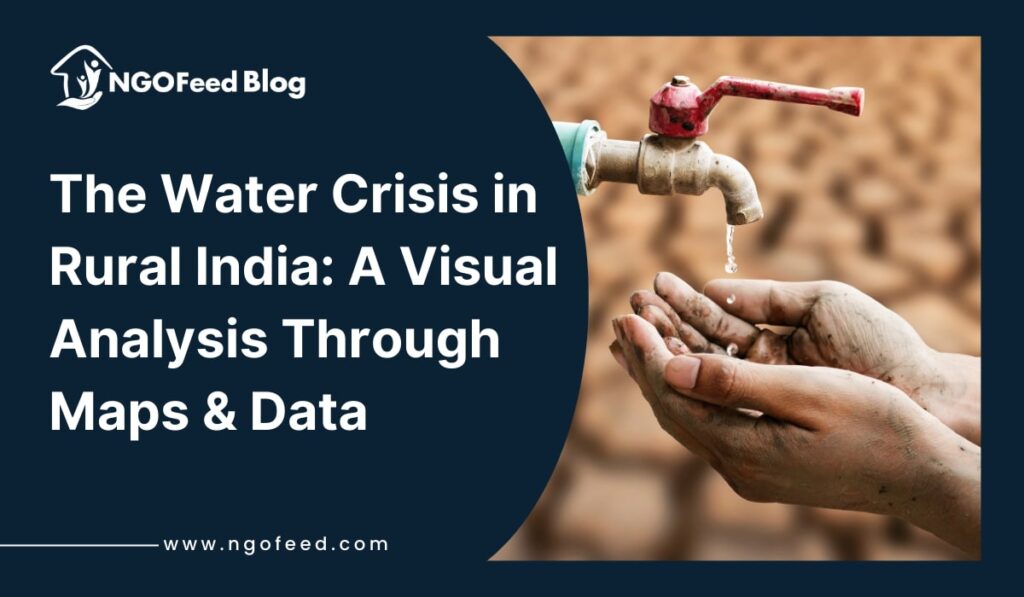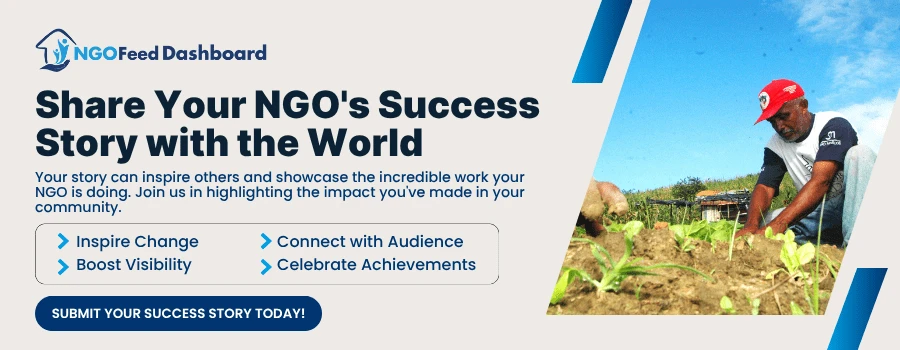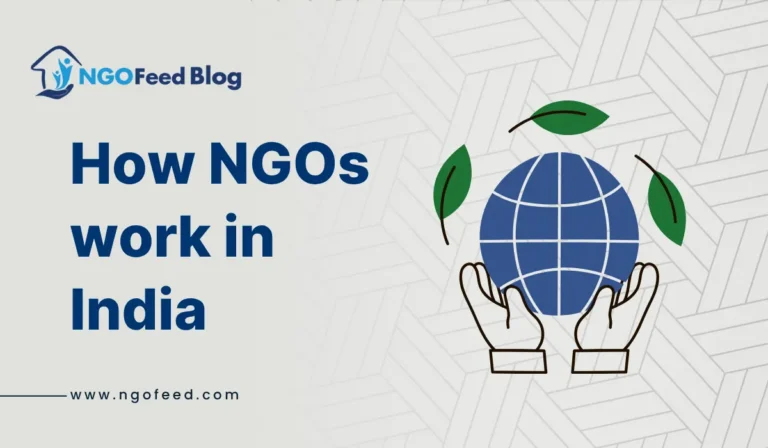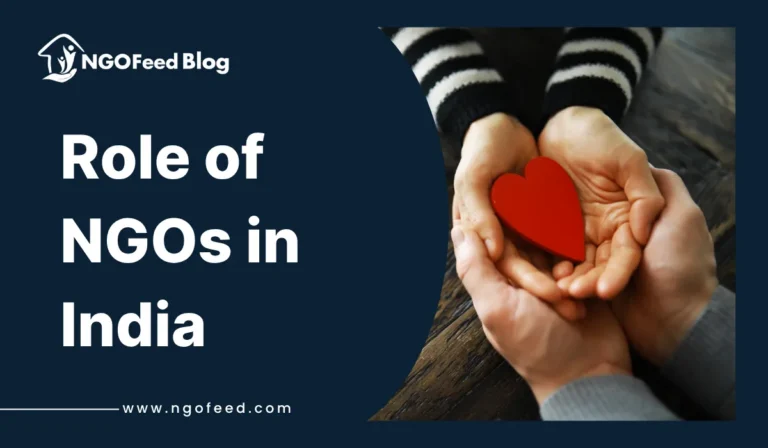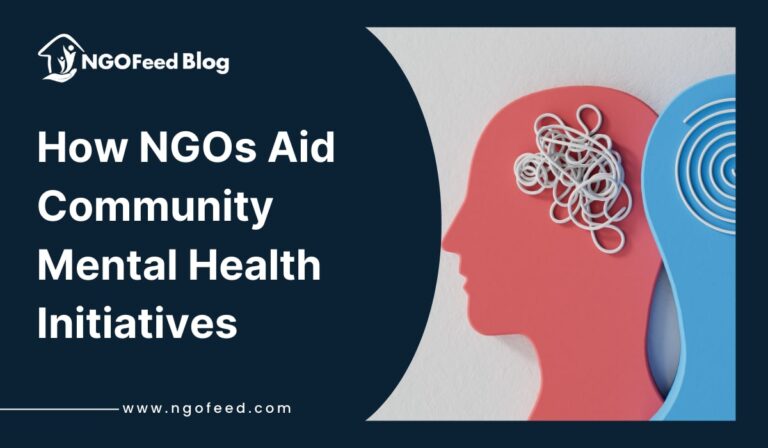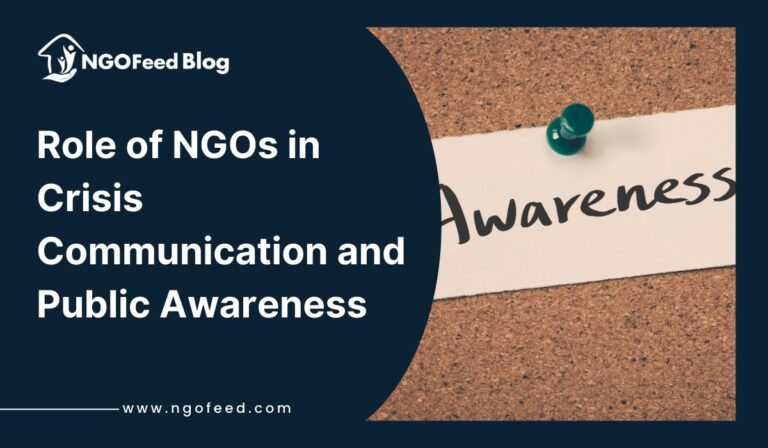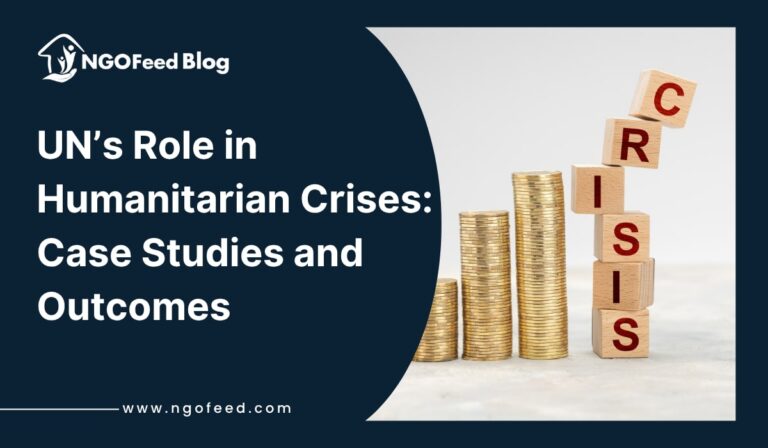Water Crisis in Rural India: Water is one of the fundamental human rights, and millions of Indians in rural areas are still deprived of safe and adequate water. However, the sheer scope of rivers and aquifers in the country has turned into a daily battle of water scarcity and contamination in the villages. Poor dependence on groundwater, coupled with unpredictable rains and climate change, has caused acute shortages in many communities. In drought-prone areas like Rajasthan, Maharashtra or Bundelkhand, just to bring in water, one may have to walk a few kilometres every day, which affects the education, health and lives of the people in such a manner that, in many cases, may be disproportional to women and children.
The crisis is national, but with uneven distribution, with certain regions being plagued by scarcity and other regions being plagued by quality problems like fluoride or arsenic pollution. Data and maps can help us see these inequalities in a more impactful way, where the gaps are the worst and the intervention is the most necessary.
Here, the NGOs have a significant role to play. In establishing water harvesting infrastructures at the community levels, lobbying and creating awareness on the conservation, NGOs are playing a mediating role between government programs and the local demand. They contribute to safeguarding the rural population by making sure it cannot be left at the back of the queue in terms of water security issues by combining concrete action on the ground and data-driven solutions.
This article is a visual examination of the rural water crisis in India through maps and statistics, as well as highlighting the role NGOs could play in the creation of sustainable and inclusive water solutions.
Table of Contents
Understanding the Water Crisis in Rural India
The rural heart of India is where almost 65 per cent of the nation’s population resides, yet a safe and adequate water source is still a thorn in the flesh. The scale of the crisis is overwhelming; millions of households depend on groundwater, which is being pumped out at an alarming rate at the hands of over extraction to provide irrigation and drinking water. The problem has been compounded by climate change, whereby unpredictable monsoons, prolonged droughts and extreme weather patterns have changed the normal water cycle. In addition to scarcity, quality is becoming an issue of concern, since the rural communities are exposed to severe health issues like diarrhoea, fluorosis, and arsenic poisoning due to contaminated sources of water.
The state of crisis in India is not evenly distributed, but it is much more diversified. States such as Rajasthan, Maharashtra, and Karnataka often face droughts and water shortages, requiring them to commute to water bodies at a long distance. Conversely, other states such as West Bengal,Assam, and Bihar always have water resources that are very rich, but contaminated with naturally occurring arsenic or industrial pollutants. Such regional inequalities imply that there are villages which are stricken by acute scarcity, others are forced to deal with unsafe drinking water, and this is a two-pronged problem of scarcity and quality.
The magnitude of the rural water crisis in India, as well as its uneven distribution, needs to be comprehended to formulate the interventions. Through local-level learning and data-informed understandings, NGOs and policymakers can focus on region-specific solutions that will suit the needs of the specific region.
Visualising Inequalities: Maps & Data on Water Scarcity and Quality
Why Maps & Data Matter
- Invisible inequalities can be seen with the help of maps and datasets, and we can simply see where there is the greatest water scarcity or pollution.
- They offer NGOs and policymakers evidence-based tools to focus on interventions.
Water Shortage: Groundwater and Rainfall
- According to groundwater depletion maps released by the Central Groundwater Board, it can be seen that almost 60% of the districts in India are either in critical or overexploited areas.
- There is alarming groundwater depletion in states such as Punjab, Haryana and Tamil Nadu, which is a result of intensive farming methods.
- The rainfall pattern maps indicate an unpredictable monsoon, thus leaving water-stressed areas such as Bundelkhand and Marathwada permanently parched.
Water Quality Concerns
- Water contamination maps demonstrate that the quality concerns are on the same level of urgency as the scarcity.
- The arsenic contamination is experienced in West Bengal, Bihar and Assam.
- Fluoride pollution is widespread in Rajasthan, Andhra Pradesh and Karnataka, where it leads to health complications such as fluorosis.
- Agricultural and industrial belts are full of nitrate and industrial pollutants.
Role of NGOs – Water Crisis in Rural India
Visual information aids NGOs to develop specific solutions like water collection systems, purifying facilities and conservation initiatives. Maps are also good at reinforcing advocacy because they help in highlighting region-specific challenges so that resources are channelled to the communities that are most in need.
Role of NGOs in Addressing Water Challenges
The policy alone will not help in dealing with water scarcity and contamination in rural India. NGOs are important in closing the gap between the government processes and the local demands, offering both feasible and sustainable solutions.
Maintaining the Community Needs- Policy Intersection
NGOs assist in making sure that the schemes of the government reach the villages that require them the most. They evaluate water issues facing local places and promote solutions that are specific to the context of a community.
Water Management at the Community Level
Activities like rainwater harvesting, check dams, and watershed establishment are being done with active communal participation. NGOs educate the villagers to keep these systems in place, and they get the feeling of ownership and sustainability.
Improving Water Quality
Other than availability, quality is a significant issue. NGOs give out water filters, install purification stations and create awareness programs on safe water practices. These interventions minimise the waterborne diseases and enhance the general health of the people.
Strengthening Local Communities
Water committees are often done with women and youth, making the access and local monitoring fair. The communities are taught on capacity-building programs on how they can monitor the amount of water available and how to manage the shortages of water shortages seasonally.
Influence on Policy and Advocacy
With the help of data and case studies, NGOs impact the local and state water management policies. They propose sustainable behaviours that can be replicated so that it has long-lasting effects.
NGOs contribute to making the vision of water security a feasible reality by providing rural communities with a combination of on-ground action, education, and advocacy to gain access to reliable and safe water.
Toward Sustainable Water Security: The Way Forward
The approach to providing rural populations in India with sustainable access to water involves both technology and the active involvement of the community, with the help of policy support. Although the problems are considerable, a multi-pronged strategy will provide a lasting influence.
Technology-Driven Solutions
- GIS mapping, groundwater monitoring, and water-saving irrigation processes aid in identifying areas in which water is in high demand and maximising the use of water.
- Digital solutions enable NGOs and local governments to organise interventions more effectively and monitor the progress in real-time.
Community Empowerment
- Long-term resilience is obtained through educating the villagers on water conservation, safe use, and seasonal planning.
- By forming local water committees, accountability is guaranteed, and the availability of participation is more so amongst women and youth.
Collaborative Approaches
- By forming partnerships among NGOs, the government and the actors in the private sector, it is possible to scale successful interventions.
- Exchange of best practices between regions assists in the replication of best practices and the avoidance of resource duplication.
Policy Advocacy, Sustainable Practices
- NGOs draw on evidence-based information to shape water-related policies and encourage sustainable water management practices such as harvesting rainwater, watershed management, and watershed pollution.
- The long-term plans focus on availability as well as quality of water, which ensures that communities can access safe water to drink, conduct agriculture, and support their livelihoods.
- Through technology, education, and advocacy, NGOs can help bring about an age in which the rural community is no longer at the behest of erratic water supply. Inclusive, community-led action and data-informed practices are the means that help transform sustainable water security into not only a goal but also a practical reality.
Frequently Asked Questions (FAQs)
So why is rural India experiencing a water crisis when there are plenty of rivers and rainfall in the country?
Although India has vast water resources, their uneven distribution, excessive exploitation of groundwater, pollution, and unreliable rainfalls have resulted in severe water shortages in most of the rural areas.
What is the role of maps and data in comprehending the rural water crisis?
Visualised by maps and datasets, these data demonstrate the inequalities in water availability and quality, determine the regions with drought or contamination, and, in such a way, direct the NGOs and policymakers to the focus of interventions.
What is the contribution of NGOs in dealing with water issues in rural areas?
NGOs also provide community-based solutions such as rainwater harvesting, water purification and awareness, and policies, advocating policies and training local communities on the management of their water resources.
Which parts of India are the most adversely affected by water shortage or pollution?
In Rajasthan, Maharashtra and Bundelkhand, where droughts are common, there is an acute shortage, whereas in West Bengal, Bihar and certain regions of Rajasthan, there are water pollution problems such as arsenic and fluoride.
So, how can we attain sustainable water security in rural India?
Technology (GIS, groundwater monitoring), community participation, policy advocacy, and collaboration between non-governmental organisations, governments, and local people play a key role in water security in the long run.

